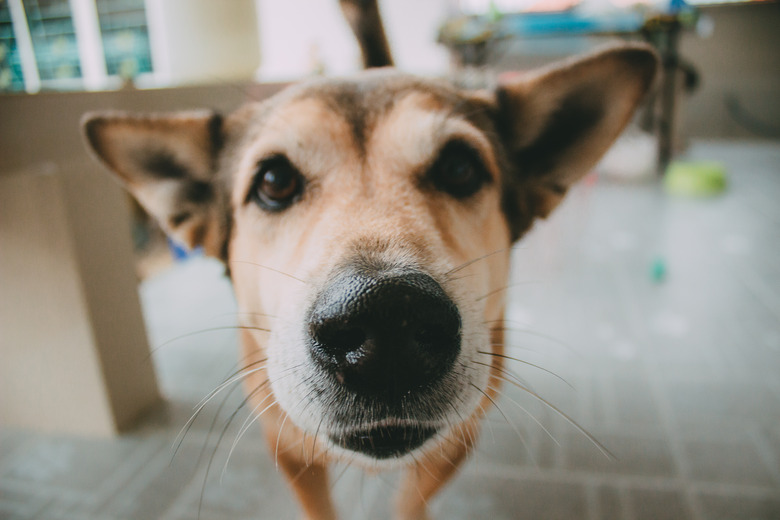Does It Hurt An Animal If Their Whiskers Are Cut?
Cats and dogs do not have nerves in their whiskers, so they don't feel pain if you snip them — but they might feel pain as a result if they bump into things in the night. Whiskers help them navigate around objects, walls, and other obstacles in their path to judge distances and to sense when prey or predators are near.
Whiskers pick up vibrations and signal moods
Whiskers pick up vibrations and signal moods
Cats' and dogs' whiskers have what are called proprioceptors at their ends, which pick up on the slightest vibrations around them. They send messages to the nerves positioned where the whiskers connect to the face or body, so the cat or dog knows something is there and looks more closely. Both dogs and cats have heightened senses of smell and hearing, but their eyesight is not as good, so in a sense, whiskers help them "see" better.
When dogs and cats are hunting or are alert for another reason, they usually push their whiskers forward, trying to get as much information as they can about their surroundings. Whiskers that are pulled back point to aggression, but when animals are relaxed, their whiskers simply stick straight out.
Strategic placement of whiskers
Strategic placement of whiskers
Most cats have 12 whiskers on their face, positioned in three rows on each cheek, although the pattern can differ depending on the breed. While everyone notices the whiskers on a cat's face, cats also have whiskers on their chin, above their eyes and upper lip, by their ears, and even on their forelegs. Dogs' whiskers don't follow such a precise pattern in neat rows, but all dogs do have whiskers above their eyes and upper lip, on their chin, and on the sides of their muzzle.
While cats' faces are rounded and flatter, dogs have a muzzle that extends from their face, making it difficult for them to see what is below their muzzle. The whiskers on their muzzle allow dogs to sense the edges of their food and water bowls in the night, for example, or the space of a partially open door.
Whiskers stick out because they are thicker than regular hair, and their roots are much deeper too. You don't often find dogs or cats stuck in small places, and that's because of their whiskers. Facial whiskers typically stick out to the width of the body, so the animals know if a space they'd like to squeeze into is too small for them.
Trimmed whiskers can be disorienting
Trimmed whiskers can be disorienting
Cats and dogs who return from vet visits with a cone around their head often act disoriented, and pet parents might think they are groggy from medication. In fact, it is more likely that they cannot use their whiskers to help them get around when they are trapped in a cone. Similarly, they cannot navigate well if their whiskers are short and the proprioceptors on their tips have been cut off.
Mother cats know this, so they sometimes chew down their kittens' whiskers to keep them from straying too far and becoming lost. The disoriented kittens know to stay close to their mother. Whisker chewing is also sometimes done by a cat trying to show dominance over another cat. The dominant cat thinks he's king of the house and wants to show it. The cat whose whiskers have been chewed feels inferior, and it affects his self-esteem.
While cutting whiskers doesn't cause pain the way pulling them out does, it is a huge disservice to the animals because they rely on their whiskers every day to get around safely and to learn about their environment. The saying "cats always land on their feet" wouldn't be true if their whiskers weren't there to help them judge distances when they jump from high places. Dogs' whiskers help them navigate to their doggy door in the dark. Whiskers serve an important purpose, so don't let anyone ever trim your cat or dog's whiskers.


